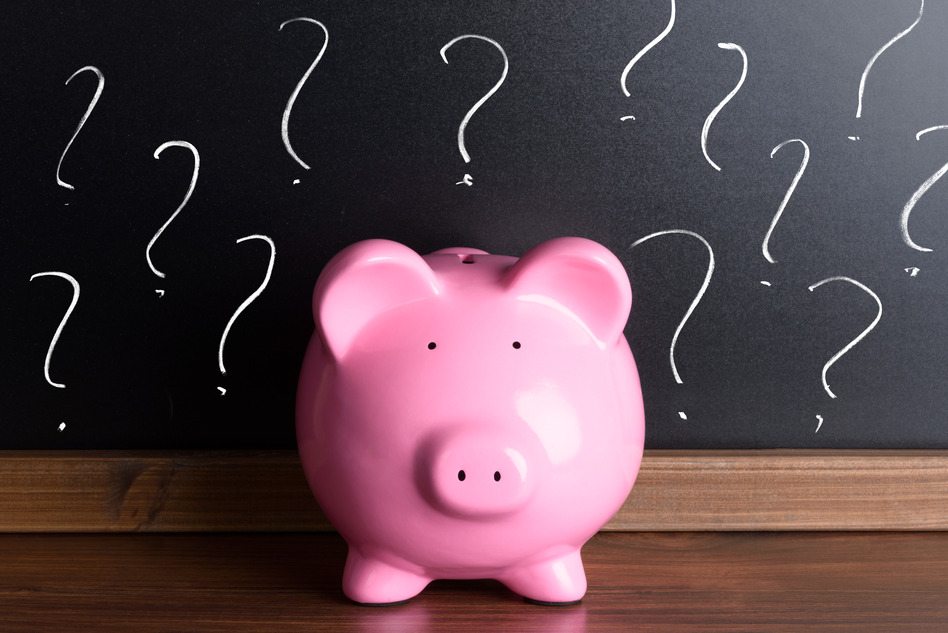A healthy emergency fund covers you in the event of a job loss, sudden illness or other financial catastrophe where you’d need to tap into some extra cash. Keeping your savings in a separate account and making your deposits automatic are the easiest ways to grow your balance. But how do you know when enough is enough?
Financial experts throw out lots of different figures on how big your emergency fund should be, but there’s no one-size-fits-all answer. How you answer the following questions can help you determine how big your emergency cushion needs to be.
What’s the bare minimum needed to cover my monthly expenses?
In the worst-case scenario, your emergency fund should be sufficient to pay all of your bills if something major happened like a job loss or an injury that prevented you from working for an extended period of time. Figuring out exactly what you’d need to get by for a month is a good starting point for settling on an emergency savings goal.
When you’re adding up your expenses, focus on those things that would need to be paid first. That includes your rent or mortgage payment, utility payments and insurance. From there, you can add on things like groceries and gas. If you have debt, you’d also want to factor in your payments for that but you wouldn’t include extras that you could do without, such as entertainment or dining out.
If your monthly nut isn’t that big and you could find ways to cut your costs even further if you needed to, then a smaller emergency fund may be sufficient. Three months’ worth of expenses is a good baseline and if you’re already living below your means it’s usually not too difficult to save that amount in a relatively short span of time.
Am I the only person I need to support?
When you’re single, it’s easier to keep your overhead costs fairly low since you can directly control all of your expenses. If you’re married or have kids, the cost of maintaining a household is exponentially higher. As a result, your emergency fund typically needs to be a bit bigger to accommodate the added expense of taking care of multiple people.
Increasing your emergency savings to cover six months’ of expenses is a wise move, especially if you’re the sole breadwinner. If both you and your spouse work, having that added savings can help your income stretch even further if one of you ends up out of a job temporarily. Single parents would also want to use six months’ worth of savings as the minimum for building their emergency fund since there’s no second income to fall back on.
How quickly could I find a new job if I had to?
According to the Bureau of Labor, the average unemployment period lasts for nearly 31 weeks. That means for someone who’s been laid off or let go for any reason, they’re looking at close to an eight month stretch before they find a new position.
Building your emergency fund to the point where it covers eight months’ worth of expenses is a lofty goal but whether you need to go that route depends not only on your expenses and family situation but your professional background as well. If you work in a field where jobs are plentiful and you’re well-qualified to work in a number of positions, the odds of finding a new gig sooner rather than later are likely to be good. When that’s the case, an eight month emergency fund might be overkill.
On the other hand, if you’re self-employed or openings are scarce in your particular industry, finding something comparable to your old job may be more difficult. In that scenario, eight months of expenses would be necessary to hedge your bets in case you can’t find something right away. You might even consider bumping it up to 12 months just to be on the safe side.
Do I have any back-up sources of income?
When you’re gauging the ideal size for your emergency fund, you need to factor in what other sources of income would be available if you wound up out of a job or unable to work. For example, if you’re eligible for unemployment that could bring in a few hundred dollars a week to help fill the gap.
You should also consider any investments you own that could generate some income. If you hold a substantial amount of stock, for instance, that’s something you could sell if you needed to. You’d likely have to pay taxes on the earnings but it’s an option you could turn to in a pinch.
The key is to look at every possible opportunity for bringing in money. Starting a side hustle, picking up freelancing work or selling off things around the house on eBay can generate some income so you don’t drain your emergency fund too quickly.
The more creative you can be about finding alternatives to pay the bills, the less money you can get away with having in emergency savings.
Could I use credit if my savings fall short?
Using a credit card or home equity line isn’t an ideal replacement for an emergency fund, but it’s still an option worth thinking about if you haven’t been able to save a huge amount of money yet. The biggest drawbacks of using credit for emergency expenses is having to pay interest on whatever you charge, which can take a bigger bite out of your wallet in the long run.
The other issue to keep in mind is whether you’ll be able to make the payments on the debt until your income gets back on track. With a home equity line, the repayment terms are usually pretty lenient and you may even be able to get by with paying just the interest each month at the outset. Credit card companies, on the other hand, typically require you to pay 1 to 2 percent of the balance each month at a minimum.
Consider your comfort level
A three-month emergency fund may be plenty to cover your expenses but that won’t matter if you’d sleep better at night knowing you had six months’ worth of savings stashed away instead. The final and perhaps most important thing to factor in when choosing the size of your emergency fund is what you really need to feel financially secure when a rainy day comes along.
How long will your emergency fund last?




